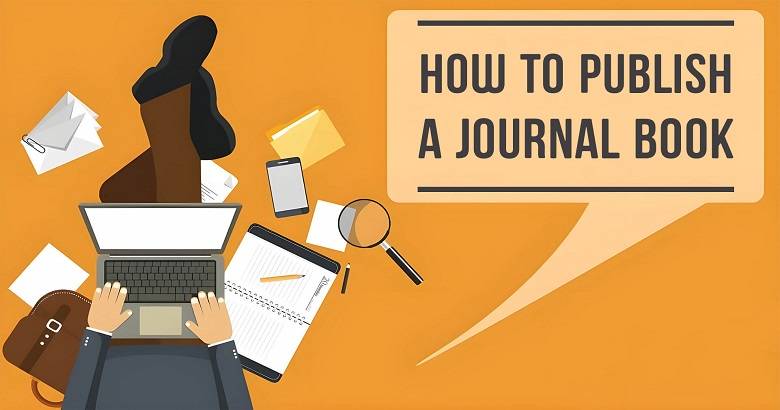Publishing a journal book can be exciting and rewarding, whether you’re looking to share your personal experiences, provide a guided journal for others, or create a niche product for a specific audience. This blog post will walk you through the steps to successfully publish a journal book, from initial concept to final publication.
Determine Your Purpose and Audience
Defining Your Purpose
Before you start, clarifying why you want to publish a journal book is essential. Consider the following purposes:
- Personal Expression: Sharing your experiences or thoughts with a broader audience.
- Guided Journaling: Providing prompts and structures to help others explore specific topics or personal growth.
- Niche Interests: Catering to a specific audience with unique interests, such as travel, fitness, or mindfulness.
Identifying Your Audience
Understanding your target audience is crucial for creating a journal book that resonates with readers. Consider:
- Demographics: Age, gender, profession, and other relevant factors.
- Interests: What topics or themes are your audience passionate about?
- Needs and Challenges: How can your journal book meet their needs or help them overcome challenges?
Planning Your Journal Book
Choosing a Theme and Structure
The theme and structure of your journal book will guide its content and layout. Here are some common types:
- Daily Journals: Pages for each day with prompts or spaces for free writing.
- Themed Journals: Focused on specific topics such as gratitude, travel, or wellness.
- Interactive Journals: Including activities, questions, and exercises for the reader.
Creating an Outline
An outline will help you organize your ideas and ensure your journal book has a clear flow. Consider the following components:
- Introduction: Explain the purpose of the journal and how to use it.
- Sections or Chapters: Divide the journal into manageable parts, each focusing on a different aspect of the theme.
- Prompts and Activities: Include engaging prompts and activities to guide the reader.
Setting a Timeline
Establish a realistic timeline for writing, editing, designing, and publishing your journal book. Break the process into smaller tasks with specific deadlines to keep yourself on track.
Writing and Designing Your Journal Book
Writing Engaging Prompts
Prompts are the heart of a guided journal. Make sure they are:
- Clear and Concise: Easy to understand and follow.
- Open-Ended: Encouraging deep reflection and personal insights.
- Relevant: Aligned with the theme and purpose of the journal.
Designing the Layout
The design of your journal book is crucial for its usability and appeal. Consider the following design elements:
- Cover Design: An attractive cover that reflects the theme and grabs attention.
- Interior Layout: A clean and easy-to-navigate layout with ample space for writing.
- Typography: Readable fonts that enhance the overall aesthetic.
- Illustrations and Graphics: Visual elements that complement the content and make the journal more engaging.
Using Design Software
You can use various design software tools to create your journal book’s layout:
- Adobe InDesign: A professional tool for detailed layout design.
- Canva: User-friendly and great for beginners.
- Microsoft Word or Google Docs: Suitable for simple layouts.
Editing and Proofreading
Self-Editing
Start by editing your own work to catch obvious errors and improve content flow. Look for:
- Clarity and Consistency: Ensure your prompts are clear and consistent throughout the book.
- Grammar and Spelling: Correct any grammatical or spelling errors.
- Layout and Design: Check for any design inconsistencies or layout issues.
Hiring Professional Editors
Consider hiring professional editors for a more thorough review. Types of editing include:
- Developmental Editing: Focuses on the overall structure and content.
- Copyediting: Ensures correct grammar, punctuation, and consistency.
- Proofreading: The final check for any remaining errors.
Choosing a Publishing Method
Self-Publishing
Self-publishing offers more control and higher royalties but requires more effort on your part. Steps include:
- ISBN and Copyright: Obtain an ISBN and register your copyright.
- Print-On-Demand (POD): Services like Amazon KDP, IngramSpark, and Lulu allow you to print books as ordered, reducing upfront costs.
- Ebook Format: Consider creating an ebook version for platforms like Kindle, Apple Books, and Kobo.
Traditional Publishing
Traditional publishing involves submitting your manuscript to a publishing house. Steps include:
- Query Letter: A concise and compelling letter to pitch your journal book.
- Book Proposal: A detailed document outlining your book’s content, target audience, and market potential.
- Finding an Agent: Many traditional publishers require authors to have a literary agent to represent their work. An agent can help you refine your proposal, pitch your book to publishers, and negotiate contracts.
Hybrid Publishing
Hybrid publishing combines elements of traditional and self-publishing. Authors usually pay for some production costs in exchange for higher royalties and more control over the publishing process. It’s essential to research hybrid publishers thoroughly to ensure they are reputable.
Printing and Production
Print-On-Demand (POD) Services
Print-on-demand (POD) is a cost-effective option for self-publishers. Here are some popular POD services:
- Amazon KDP: Offers extensive reach and the ability to print paperback and hardcover books.
- IngramSpark: Provides access to a wide distribution network, including bookstores and libraries.
- Lulu: Known for high-quality printing options and customizable features.
Offset Printing
If you anticipate large print runs, offset printing can be more cost-effective per unit than POD. This method requires a larger upfront investment but can save money in the long run. Work with a reputable printing company to ensure high-quality results.
Distribution and Marketing
Setting Up Distribution Channels
To make your journal book available to readers, set up distribution through various channels:
- Online Retailers: Amazon, Barnes & Noble, and other online bookstores.
- Brick-and-Mortar Stores: Partner with local bookstores and specialty shops.
- Libraries: Use services like IngramSpark to distribute your book to libraries.
- Direct Sales: Sell directly through your website or at events and workshops.
Marketing Strategies
Effective marketing is crucial for the success of your journal book. Here are some strategies:
- Author Platform: Build a strong online presence through a professional website, blog, and social media.
- Email Marketing: Create an email list to inform potential readers about your book’s release and promotions.
- Book Launch Events: Host virtual or in-person events to generate excitement and sales.
- Media Coverage: Reach out to bloggers, influencers, and journalists for reviews and features.
- Advertising: To reach your audience, invest in targeted ads on platforms like Facebook, Instagram, and Google.
Leveraging Reviews and Testimonials
Positive reviews and testimonials can significantly boost your book’s credibility and sales. Encourage readers to leave reviews on the following:
- Amazon and Goodreads: These platforms are critical for discoverability and credibility.
- Your Website: Feature testimonials prominently on your website.
- Social Media: Share positive feedback on your social media channels.
Legal and Financial Considerations
Copyright and ISBN
Secure your intellectual property by:
- Registering Copyright: Protects your work legally and gives you the exclusive right to reproduce and distribute your book.
- Obtaining an ISBN: A unique identifier for your book that is necessary for most distribution channels.
Budgeting and Financial Planning
Publishing a journal book involves various costs. Create a detailed budget that includes:
- Writing and Editing: Costs for professional editing services.
- Design: Expenses for cover design and interior layout.
- Printing: Costs for POD or offset printing.
- Marketing: Budget for advertising, promotional materials, and book launch events.
Royalties and Pricing
Set a competitive price for your journal book that covers your costs and provides a reasonable profit. Consider:
- Production Costs: Ensure your price covers the cost of printing and production.
- Market Rates: Research prices of similar books in your genre.
- Royalty Rates: Understand the royalty structures of different distribution channels to maximize your earnings.
Post-Publication Activities
Engaging with Your Readers
Building a loyal reader base is vital for long-term success. Engage with your readers through:
- Social Media: Regularly interact with your audience on social media platforms.
- Newsletters: Send updates, exclusive content, and promotions to your email subscribers.
- Events and Workshops: Host events, workshops, or webinars related to your journal book’s theme.
Gathering Feedback and Iterating
Collect feedback from your readers to improve future editions or new projects. Consider:
- Surveys and Polls: Use surveys to gather insights on what readers liked and what could be improved.
- Reader Reviews: Analyze reviews for common themes and suggestions.
- Direct Engagement: Engage with readers through social media or email to understand their experiences.
Planning Future Projects
Use the experience and feedback from your first journal book to plan future projects. Consider:
- Series or Sequels: If your journal book was successful, consider creating a series or sequel.
- New Themes: Explore new themes or niches based on reader interest and market trends.
- Collaboration: Partner with other authors or experts to create collaborative projects.
Conclusion
Publishing a journal book is a multifaceted process that requires careful planning, creativity, and perseverance. By understanding your purpose and audience, planning effectively, and executing each step with attention to detail, you can successfully bring your journal book to market. Here’s a final recap of the key steps and considerations:
Frequently Asked Questions
1. What are the first steps to publishing a journal book?
Start by defining the purpose of your journal book, researching your target audience, and planning the content structure, including sections, prompts, and layout.
2. Do I need illustrations or graphics in my journal book?
While not mandatory, illustrations and graphics can enhance the appeal and functionality of a journal book. Consider hiring a designer if you’re not skilled in this area.
3. How do I choose a publisher for my journal book?
Look for publishers with experience in producing journal books. Consider self-publishing platforms if you prefer more control over the process and profits.
4. What binding options are best for journal books?
Spiral binding is popular for journals because it allows the book to lay flat. Other options include perfect binding and saddle stitching, depending on your preference and budget.
5. Should I include an introduction or instructions in my journal book?
Yes, including an introduction or instructions can help users understand how to best use the journal and get the most out of it.





